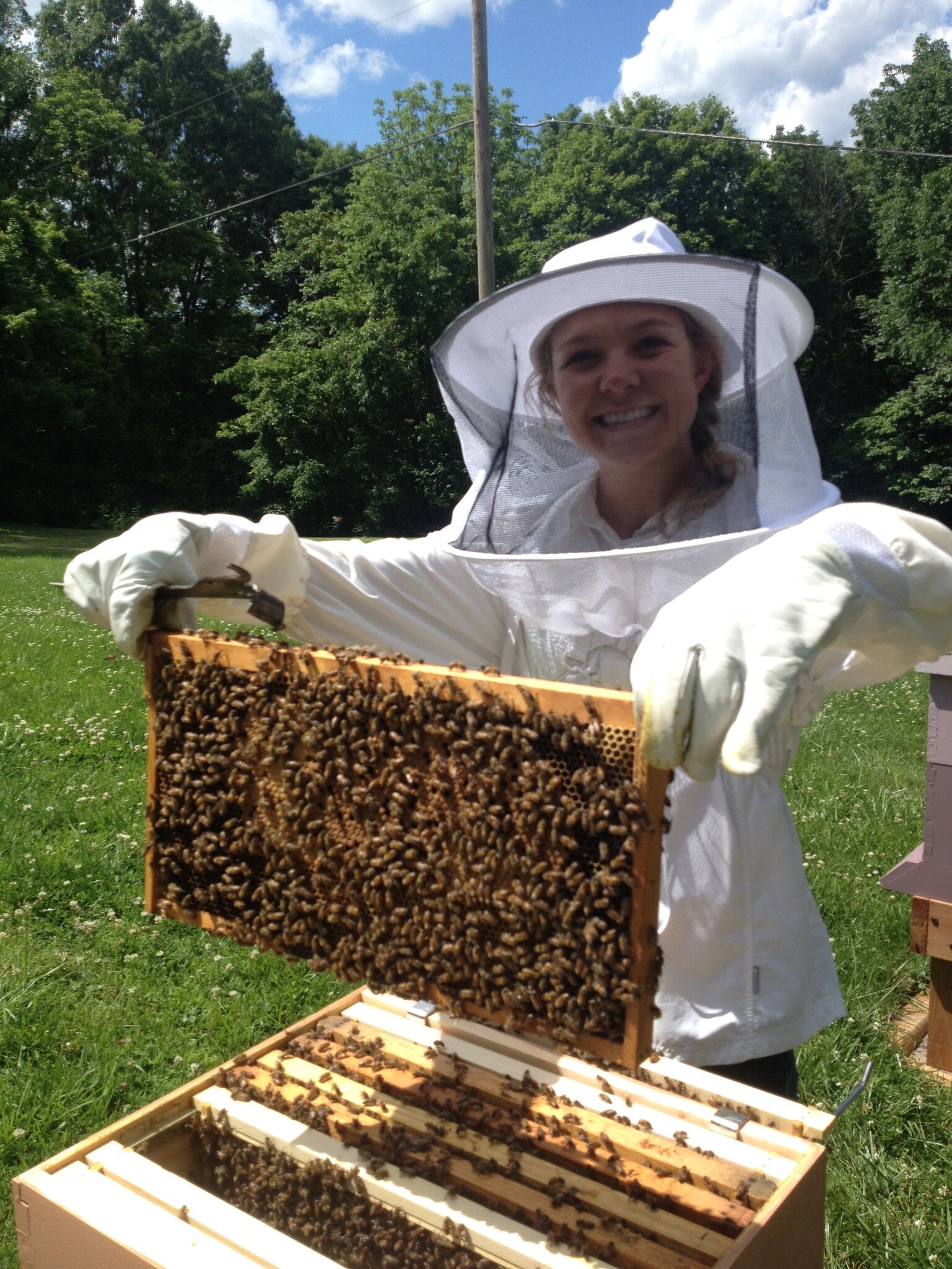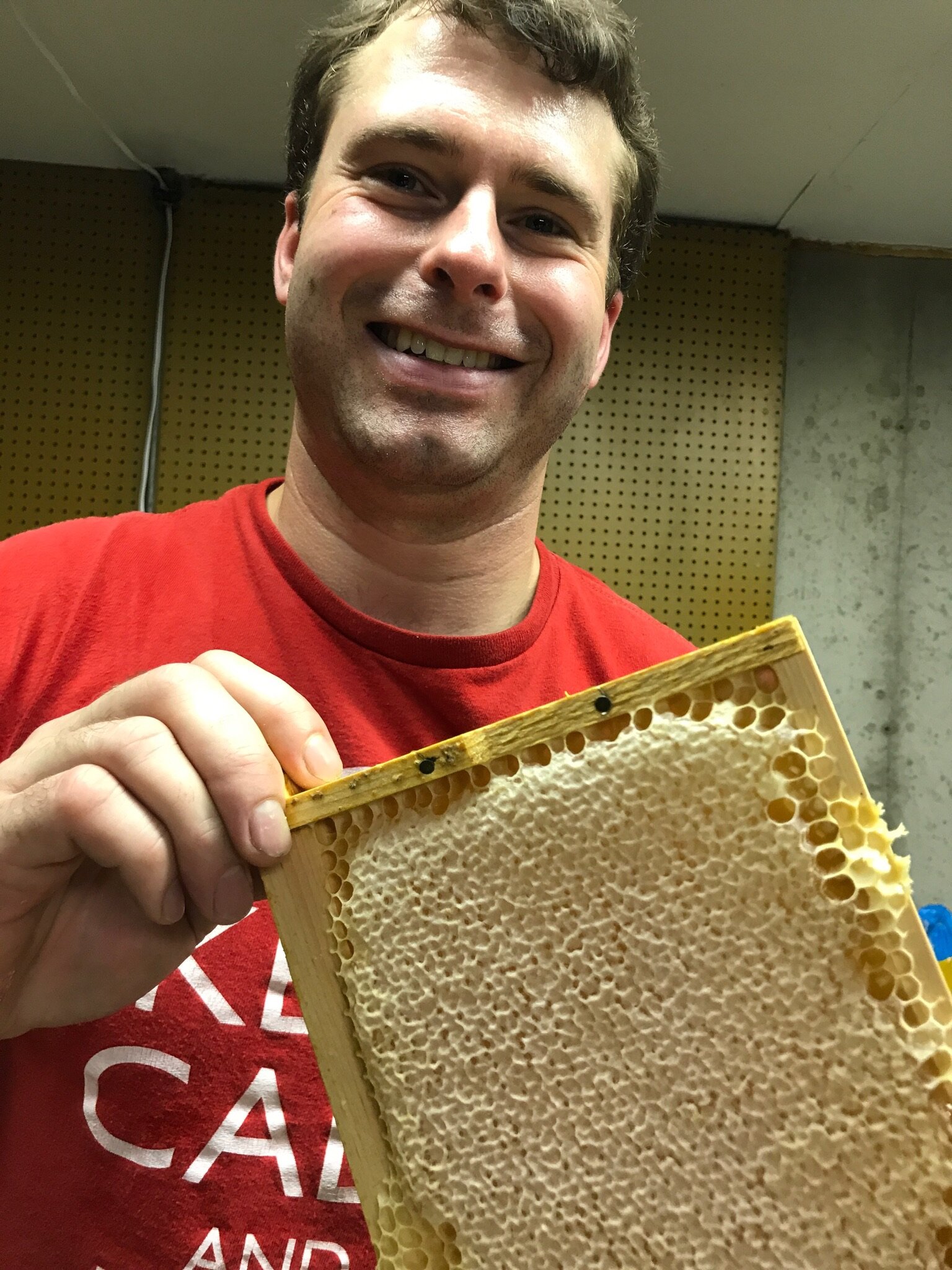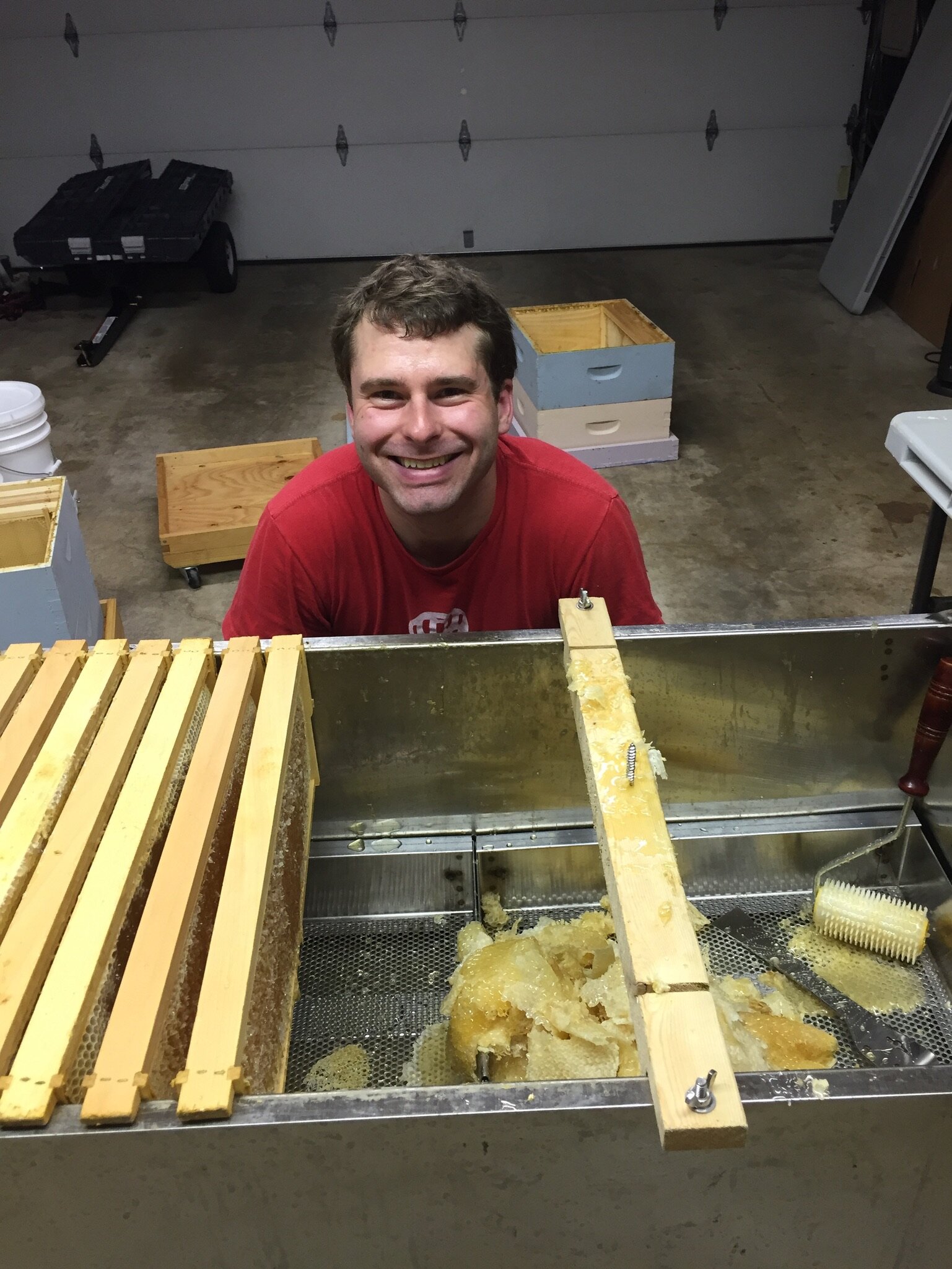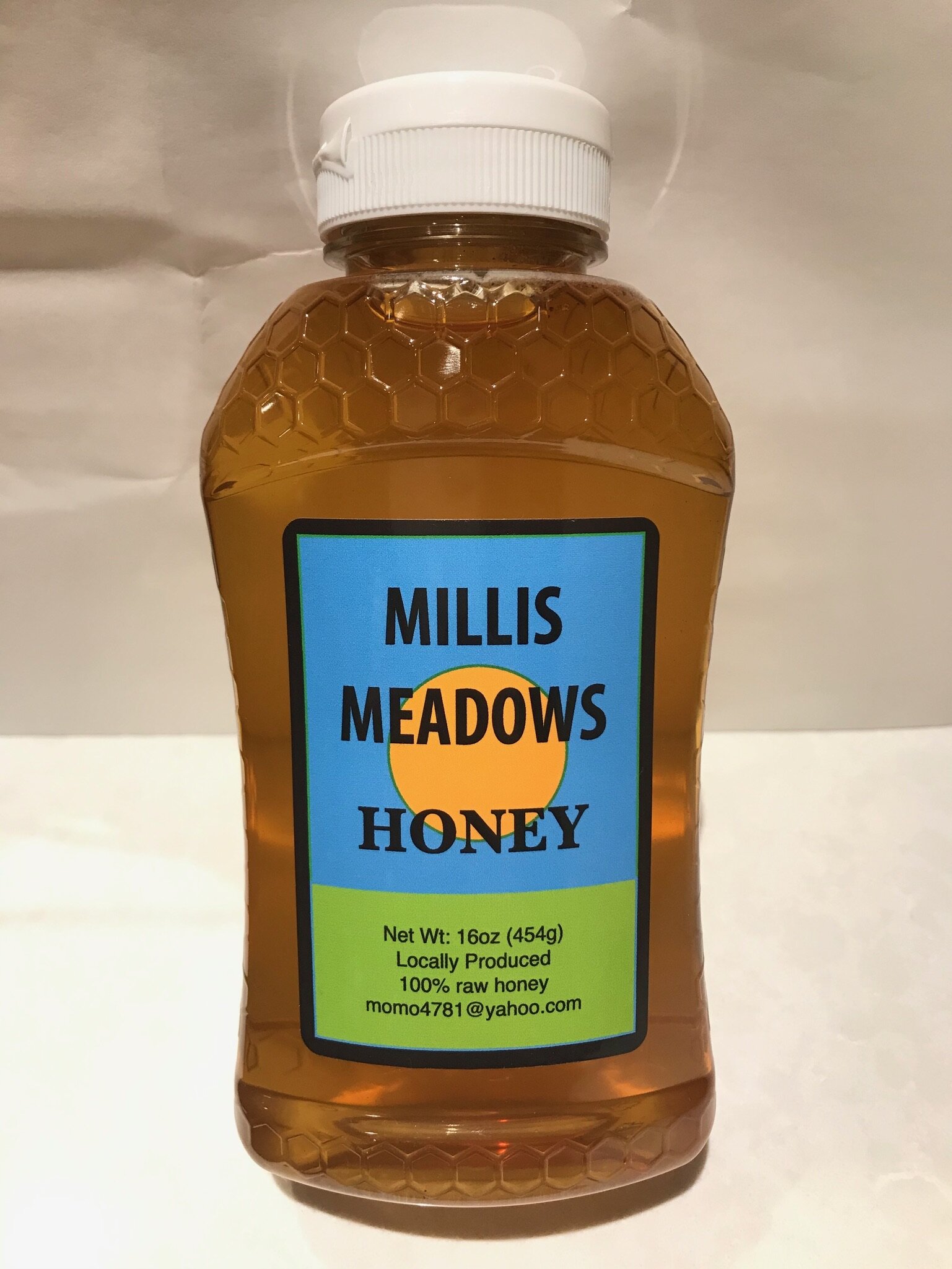From Hive to Bottle
How does honey get from honeycomb inside a hive to a bottle in your kitchen? This process is called honey extraction. Honey stored within capped honeycomb needs to be removed from the comb and filtered several times before it is ready to be bottled. Steps of the extraction process are listed below.
1) Removing honey supers from the hives. Honey is kept in boxes called supers that live in the upper layers of the hive. Each super has 9 to 10 frames of honeycomb within the box. Each box or super needs to be removed for the hive. The bees that are merrily working within the honeycomb need to be safely removed. This is achieved by several methods: using an odorous smell to repel them from the area, shaking off any bees that remain, and finally blowing air through the honeycomb to brush off any stragglers. Once the honeycomb is free of bees, each super can be stacked and moved to the area of extraction.
2) Uncapping the honeycomb. If you have ever seen honey comb straight from the hive, each cell is covered with a wax cap. This cap is how bees preserve the honey for later use. When we want to remove the honey, we first need to uncap it. Each frame of honeycomb is removed from the super and taken to the uncapping tank. This tank is where a hot knife is used to cut off the wax cap from each cell. The wax falls into the tank for later processing (this is one source of beeswax).
3) Centrifugation of the honey comb. Once uncapped, the frames of honeycomb are placed into a giant centrifuge that spins the frames at high enough speeds for the honey to be pulled out. This gentle process allows the honey to separate from the wax cells without damaging the cells themselves. The cells of honeycomb take a long time for bees to make, and preserving them is very important. As the honey is pulled out of the comb it going out towards the walls of the centrifuge. Then from the walls, it runs to the floor and out a spout.
4) Filtering the honey. As honey pours out of the spout, it is collected into a bucket with a sieve placed over the top. This sieve is the largest grid through which the honey is filtered. It catches large clumps of wax that may have been spun off of the honey comb. After this large filter, the honey is sent through two smaller filters.
5) Bottling the honey. Honey is stored in 5 gallon food grade buckets until we are ready to bottle. Each bucket weighs about 60 pounds. A bucket of honey is poured into a secondary bucket that is fitted with a spout. Then the spout is used to fill each individual bottle up to the brim. A cap is added (each cap contains a tamper-proof, food-grade seal). The final step is adding a label to the front of each bottle.





